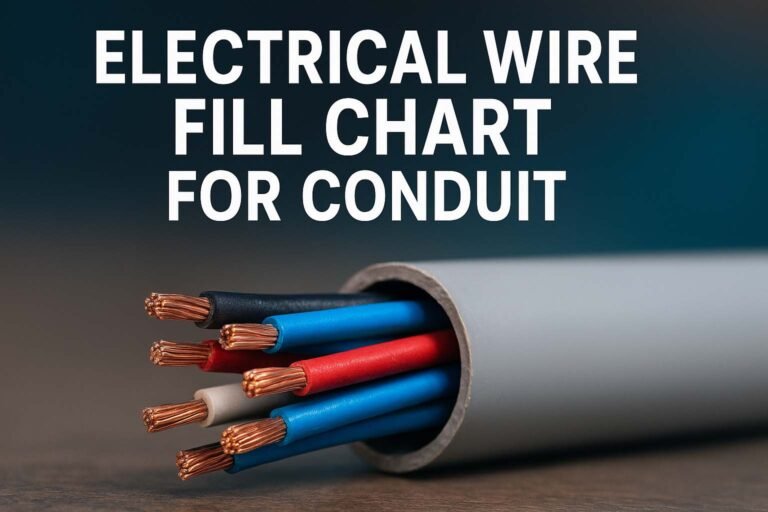Circuit Breaker Testing Methods: Best Guide
Circuit breakers are essential components of electrical systems, serving as protective devices that interrupt current flow in case of faults, preventing damage to equipment and reducing the risk of electrical fires. Regular testing of circuit breakers ensures they function correctly and meet safety standards.
Circuit Breaker Testing Methods
In this article, we will explore different circuit breaker testing methods, their importance, and the procedures involved in ensuring a reliable electrical protection system.

Table of Contents
Table of Contents
Why Circuit Breaker Testing is Essential
Circuit breakers play a critical role in maintaining the safety and reliability of electrical systems. Their main function is to protect the system from overloads, short circuits, and other electrical faults by interrupting the flow of current when necessary. Over time, circuit breakers may experience wear and tear, reducing their effectiveness and posing a risk of failure during fault conditions.
Testing circuit breakers helps identify potential issues, such as:
- Reduced tripping performance
- Insufficient mechanical operation
- Electrical contact degradation
- Incorrect current settings
By conducting regular testing, potential problems can be detected and rectified before they lead to system failures or safety hazards. The following sections will detail various methods used to test circuit breakers.
Types of Circuit Breaker Testing Methods
Circuit breaker testing methods vary based on the type of circuit breaker, the technology used, and the specific parameters being evaluated. The most common testing methods include:
1. Visual Inspection
Before performing any technical tests, a thorough visual inspection of the circuit breaker is necessary. This allows technicians to identify obvious signs of wear, physical damage, or misalignment.
Key aspects of visual inspection:
- Check for cracks or burns on the breaker’s casing.
- Inspect the contacts for corrosion or dirt buildup.
- Verify the operation of the trip mechanism and the reset function.
- Ensure that all external connections are tight and secure.
Visual inspection is typically performed as part of routine maintenance and is often the first step in identifying potential issues with the breaker.
2. Insulation Resistance Testing
Insulation resistance testing evaluates the quality of the insulation material within the circuit breaker. The resistance of the insulation should be high enough to prevent electrical leakage or short circuits. This test is typically performed using a megohmmeter, which applies a voltage and measures the resistance of the insulation.
Procedure for insulation resistance testing:
- Disconnect the breaker from the system.
- Connect the megohmmeter to the breaker terminals.
- Apply a test voltage (typically 500V or 1000V, depending on the breaker rating).
- Measure the resistance. A value below 1 megohm indicates that the insulation is deteriorating and needs attention.
This test is crucial for ensuring that the breaker can effectively isolate faults and prevent electrical leakage, which could lead to hazards. We have made a list of companies which do the testing in united states, you can have an overview here.
3. Contact Resistance Testing
Contact resistance testing evaluates the quality of the electrical contacts within the circuit breaker. Poor contact resistance can lead to overheating, reduced performance, and eventual failure of the breaker.
Key steps for contact resistance testing:
- Disconnect the breaker and remove it from service.
- Use a micro-ohmmeter to measure the resistance across the breaker’s contacts when it is in the closed position.
- Compare the measured value with manufacturer specifications.
A high contact resistance reading indicates a problem with the contacts, which could lead to poor electrical conduction or even complete failure. This test should be performed regularly to ensure proper performance.
Note: Use our online electrical load calculator for electrical load calculation here. You can also use voltage drop calculator for voltage drop calculation and for cable selection in any single and three phase circuit here. In this way you can estimate circuit breaker sizing. Further explore our online electrical calculators to design your electrical systems in an efficient way.
4. Overload and Short-Circuit Testing
Circuit breakers are designed to trip when an overload or short-circuit occurs. Overload testing ensures that the breaker trips correctly when the current exceeds its rated value, while short-circuit testing simulates a fault scenario to verify the breaker’s response.
Steps for overload and short-circuit testing:
- For overload testing, set up a load that exceeds the breaker’s rated current.
- Gradually increase the current until the breaker trips. This verifies the breaker’s ability to protect the system from overloads.
- For short-circuit testing, simulate a fault by connecting a short circuit across the breaker’s contacts.
- Observe the breaker’s response. It should trip immediately when the short circuit occurs.
These tests are crucial for ensuring that the breaker will protect the system under fault conditions and minimize the risk of damage to equipment.
5. Trip Timing Test
The trip timing test measures how quickly a circuit breaker can react to fault conditions. A breaker that trips too slowly can allow excessive current to flow, which can lead to equipment damage or fires.
Procedure for trip timing testing:
- Set up the test equipment to simulate a fault condition.
- Measure the time it takes for the breaker to trip from the moment the fault occurs.
- Compare the measured time with the manufacturer’s specifications.
This test is typically performed on both overload and short-circuit conditions to ensure that the breaker trips within the acceptable time frame for the protection of the system.
6. Primary Injection Testing
Primary injection testing is used for high-current circuit breakers, where other testing methods might not be applicable. This test applies a high current directly to the breaker’s primary terminals to simulate fault conditions.
How to perform primary injection testing:
- Disconnect the breaker from the system.
- Use a primary injection test set to apply a current higher than the breaker’s rated value.
- Observe the breaker’s trip response.
- Measure the time it takes to trip and check the accuracy of the tripping current.
Primary injection testing is essential for verifying the proper operation of large circuit breakers used in industrial applications.
7. Secondary Injection Testing
Secondary injection testing is similar to primary injection testing but involves applying current to the secondary side of the circuit breaker, usually to the trip unit or protection relays. This test is useful for testing the control and protection settings of the breaker without applying high currents.
Steps for secondary injection testing:
- Set up the test equipment to apply a simulated fault current to the secondary terminals of the breaker.
- Measure the breaker’s trip time and the accuracy of its protection settings.
- Test various settings such as time delay, trip current, and sensitivity.
Secondary injection testing is useful for assessing the performance of the breaker’s trip unit and verifying that the protection settings are configured correctly.
Best Practices for Circuit Breaker Testing
To ensure reliable and accurate circuit breaker testing, follow these best practices:
Follow Manufacturer Guidelines: Always refer to the manufacturer’s specifications and guidelines for each specific type of circuit breaker. This ensures that the correct testing procedures and values are used.
Use Proper Testing Equipment: Use calibrated and certified testing equipment to ensure accuracy. Incorrect or faulty test instruments can lead to inaccurate results.
Test at Regular Intervals: Circuit breaker testing should be performed at regular intervals based on the manufacturer’s recommendations or industry standards. Some breakers may require annual testing, while others may need testing every few years.
Record and Document Results: Keep detailed records of all test results for future reference. This documentation helps identify trends in breaker performance and supports maintenance and replacement decisions.
Conduct Visual Inspections Often: Regular visual inspections can help identify obvious issues that may require more detailed testing.
Test Under Realistic Conditions: Whenever possible, perform tests under realistic load and fault conditions to simulate the actual environment in which the circuit breaker will operate.
You can also read circuit breaker testing requirements here.
Conclusion
Circuit breaker testing methods are vital for ensuring the safety and reliability of electrical systems. By using a combination of visual inspections, insulation resistance testing, contact resistance testing, and fault simulations, technicians can identify potential problems before they lead to system failures. Regular testing ensures that circuit breakers provide the necessary protection against overloads, short circuits, and other electrical faults.
By following the right circuit breaker testing methods and best practices, circuit breakers can continue to safeguard electrical systems effectively, minimizing risks and ensuring smooth operation. Always prioritize safety and use proper testing methods to maintain the integrity of your electrical system.
This comprehensive approach to circuit breaker testing helps avoid costly repairs, downtime, and safety hazards, ensuring that electrical systems remain secure and efficient. To overview the Circuit Breaker Testing Procedure, you can follow this article in detail.
Subscribe our Newsletter to get the latest updates in Electrical Engineering.
#CircuitBreaker, #ElectricalTesting, #CircuitBreakerTesting, #ElectricalSafety, #PowerSystem, #TestingEquipment, #ElectricalMaintenance, #HighVoltageTesting, #ElectricalEngineering, #ProtectiveDevices, #CircuitBreakerInspection, #ElectricalTestingMethods, #FaultAnalysis, #SwitchgearTesting, #ElectricalSystemReliability






